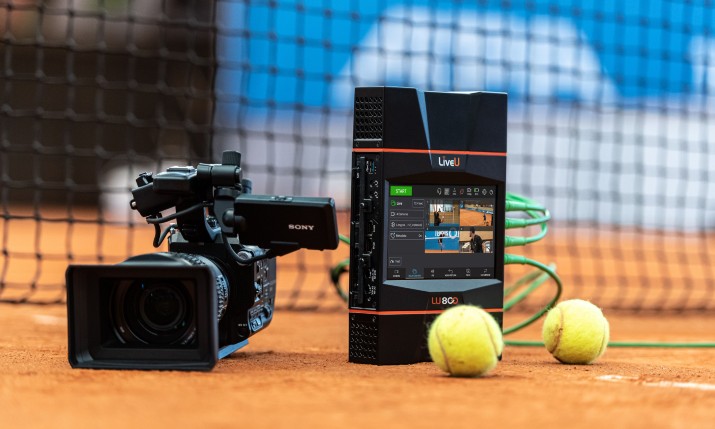A gamechanging approach to the live sports market with 5G

By Ophir Zardok, sports business development, LiveU
We all know how hard the sports market has been hit across 2020 and the reasons why. This is something I will come back to, but before that a little context.
With the launch of cellular bonding technology in 2008, the newsgathering market was forever changed – it was a truly disruptive technology shift that reached across broadcast and streaming, replacing traditional transmission technologies and bringing newsgathering firmly into the 21st century.
Next up was sports broadcasting where there were growing opportunities in the field for cellular-based technology beyond news. In fact, our technology was already being used across multiple sporting events because of its inherent capabilities for live coverage on-the-move, for example covering the 2008 Summer Games in Beijing.
Understanding the sports broadcasting market
The sports market can be subdivided as the requirements are clearly not universal. There are sports broadcasters, production companies and OB providers, plus rights holders as the main three categories, with sports news producers and channels also playing a key role. Companies in each subsector have different requirements and challenges.
On top of the aforementioned subdivisions of the sports market, there are obviously also significant variations in requirements in terms of the level at which the sport is being played – Tier 1, Tier 2 and so on – who the audience is/how big it is; whether it’s streaming or very high-end broadcast and therefore where the ROI sits.
Let’s take the example of production companies. Here, the priorities that we see are often slightly different from sports broadcasters or rights holders as they are often working across more niche competitions and events. While quality and signal reliability are still very important, the price point isn’t the same and that level of cost-effectiveness requires different thinking. Having said that, it’s quite hard to generalise because each and every sporting event is different and we prioritise understanding the requirements on a case-by-case basis, supporting customers through the whole process.
For the sports market, we knew that we had to bring in multi-camera capabilities as well as deliver the high quality required for the high-end sports markets. And we had to factor in 5G and the ongoing evolution of that, alongside remote production. We had to understand the level of resiliency required; the number of modems; the number of audio channels; 10-bit HDR; return feeds and so on. Those decisions have since born fruit.
Even before it was really called remote production, we saw our technology being used in this way because of its fundamental IP basis. We worked with production companies and sports broadcasters on multiple projects and came to understand a wide range of remote production scenarios and therefore requirements moving forward.
Planning for success
I think it’s fair to say that the term ‘remote production’ has come to be used, to a certain extent, as a magic phrase that solves all issues. But it requires planning and understanding of the technical requirements involved in live sports coverage, especially in terms of synchronisation. There’s no doubt that over the past couple of years, the sports sector as a whole has begun to see this as a more efficient way of covering events.
The COVID-19 pandemic has very clearly accelerated the need/desire to handle more productions remotely, alongside remote working more widely. There’s the need to keep everyone safe and healthy and to minimise the number of people onsite, this includes the number of production people. Sports organisations are rightly limiting the number allowed and they have to be tested. Remote production – and remote working more widely – plays a major role in this and it will only grow from here.
The next generation
5G is another factor that will have a key role to play across sports broadcasting. This will be important for us and the industry as a whole with native 5G technology. If you look at NTT DOCOMO in Japan, when it implemented its 5G network it started to look for 5G applications and central to that was the broadcasting world, specifically with sports. It’s similar in China and South Korea too, as well as with AT&T in the US and other leading wireless companies in Europe.
The second point was more specifically looking at sports broadcasting use cases. For example, with a venue, 5G suppliers are looking at creating a 5G ‘dome’ so that fans have far greater access to cellular services and broadcaster and production companies also benefit from the same. We have seen successful 5G tests in US sports stadiums, for example. There are, of course, issues that need to be resolved around the implementation of 5G, something with which we are closely involved right up to an EU level. It’s fair to say that 5G rollouts in many places aren’t progressing as fast as initially anticipated, but they are certainly coming.
Lastly, the role of the cloud is rapidly evolving across the whole industry, which dovetails with the as-a-service model the industry is gradually moving towards. The cloud is about levels of use, whether that be complete, cloud-based production where you need real time services – PTZ camera control over an IP pipe, for example, or metadata transfer from venue to studio – or content distribution. What’s clear is that the pre-integration of multi-vendor cloud services is crucial, creating a seamless workflow.
We all know that 2020 has been very difficult across the sports sector. But we are all working as hard as possible to keep bringing it back to fans, wherever they may be, and hopefully with the promising vaccines, live events will be coming back in earnest in 2021.
